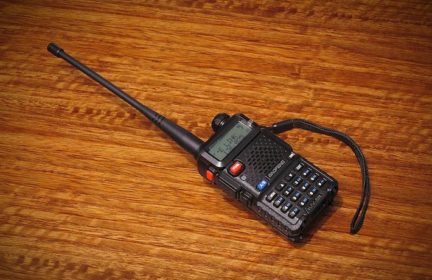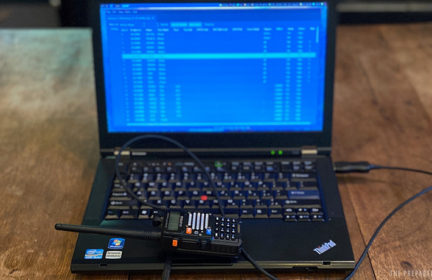Preprogramming ham radios with emergencies in mind
I have two HT radios — the sum total of my radio equipment. One of these is in my BOB and the other in my house, principally for in-home use. I would like to preprogram these radios as much as possible in advance, so that in case of emergency or evacuation I don’t have to fiddle with programming them manually — particularly if I’m out of the area and am not familiar with the local stations.
As a baby ham without many connections in the community, I don’t have default stations, repeaters or organizations that I would be a part of in an emergency. I have a very minimal connection to my local ARES group — I’ve participated in some of their weekly checkins and I know the closest accessible repeater in my area, run by the local ham radio club, of which I’m not a member. That’s about it.
I was thinking to lookup and program a bunch of repeaters in the surrounding larger area, maybe as far as an hour’s drive away, so that a repeater may be reachable even if I’m out of my immediate area. But I’m not sure if it’s worth the effort since I hear that many registered repeaters are inactive for all intents and purposes. Is there something better I can do?
-
Comments (14)
-
Seasons4 - September 5, 2021
Hi, Jonnie. Does your state have anything like my state’s Wecomm network of linked repeaters?
It’s a dozen linked repeaters scattered around the state dedicated to emergency communication. Because they’re linked, when you transmit using the closest Wecomm repeater, your transmission is heard on all of the repeaters throughout the state.
If I were you, I might just make sure I knew how to reach the repeater or two closest to home, plus any linked repeaters dedicated to emergency communications, plus install EchoLink on the cell phone. It’s worth joining the local radio club, even if you don’t have much in common with them or if they’re not very friendly. They will know a lot that is potentially useful to you.
-
Jonnie PekelnyContributor - September 9, 2021
Great ideas. I might be more inclined to join my local radio club if I didn’t have to cough up $40/year for what so far has been extremely sporadic and uninformative communication.
-
Jonnie PekelnyContributor - September 10, 2021
Well, I took a look. There are linked repeaters networks in California, but none (that I found) seems to be dedicated to emergencies. Sigh.
-
-
Bill Masen - September 6, 2021
[comment deleted]-
Jonnie PekelnyContributor - September 9, 2021
This looks potentially promising but very confusing. What are these frequencies?
-
Bill Masen - September 9, 2021
They are self explanetory
-
Jonnie PekelnyContributor - September 10, 2021
Not self explanatory to me at all. E.g. what does Prepper mean as a description? What preppers? Where? What’s the purpose of the channel?
-
JennyWren - September 10, 2021
Have to agree with you there Jonnie. I think Bill has copied a page from Here?
But it doesn’t mean much without the explanation, so I had to Goole it.
It looks like a list of frequencies that has been recommended by the blog owner for survivalists and preppers in general. I could be wrong though?
-
Bill Masen - September 11, 2021
Guys you need to remember that many prepper groups are private and dont want interaction with others, Others will not disclose locations closer than at state level, Many frequencies are those used by preppers and survivalists at events, shows, gatherings, outdoor festivals etc, others are simply shared with other groups because the signal strength and clarity is good in that area. There is no one size fits all.
-
-
Robert LarsonContributor - September 10, 2021
Jonnie – I felt like you when I was just starting off in ham radio. I got into the hobby to have a backup source of comms during an emergency, but then you aren’t given a handbook of repeaters and frequencies to tune into when you get your licence.
So the feelings you are going through are very normal.
What I ended up doing was look up various emergency plans and ideas of how other people were planning on connecting after SHTF and I did find the chart that Bill Masen shared on this thread. And just as JennyWren linked to, it’s from an old blog post back in like 2013 (maybe even older). And although many people come across this, the problem is that everyone needs to be on the same page and know about it. I doubt even 10% of ham operators are aware of this chart or are planning on using it. Doesn’t hurt to print it off and throw it in your binder, but I doubt it will be the end all be all definitive guide for how to communicate after an emergency. (just my opinion)
We can learn many valuable pointers from that chart Bill Masen linked to though.
- Have a giant print out of your plans in your ham binder
- Have a little wallet sized copy of your plan with you and your radio at all times
- Preprogram all these into your radio before SHTF and try them out
- The 3-3-3 radio plan is actually a good idea that can help guide your own personal plan.
All this will depend on your prepping group and what you all agree to do for comms. Or even a husband and a wife trying to connect to each other after a disaster. Instead of tying up the radio and burning through your battery saying “Jim… are you there? Jim… are you there? Jim… are you there?” you can do a variation of the 3-3-3 rule and tune in every half hour for 2 minutes at a particular frequency and then 2 minutes after that at another frequency if you didn’t connect on the first. Think about what makes sense and who you will be chatting with.
Back to your main question Jonnie. I gained a bulk of my frequencies from my local ARES group. I do recommend that you try and get more involved with ARES because it is a fun and valuable group that can help you develop your skills if you dive head in to it. And you’ll get a huge chunk of frequencies!
They gave me a long list of all the local nets in the area and which channels they turn to in an emergency. On top of this, I looked up what the FRS and GMRS frequencies and plugged those in so that I could listen to and talk to people using the cheap family Walmart walkie talkies. (Illegal to transmit from a ham radio on these frequencies, but during an emergency I’d risk it). https://www.radioreference.com/apps/db/?aid=7732 or https://wiki.radioreference.com/index.php/FRS/GMRS_combined_channel_chart
I looked up my local police, fire, ambulance, search and rescue, and air port frequencies on somewhere like radioreference.com and plugged those in as well. Again, illegal to transmit on these, but can gain you valuable intel.
Download the app on your phone called Repeater Book. It will show you the closest repeaters in your area and the frequencies. I plugged in the five closest repeaters to me and also those along my possible bug out route.
Track all these in a spreadsheet and print it out for your ham binder.
You will want to reorganize all these many many times and make tweaks as you continue. I highly recommend buying a programming cable and using the CHIRP software. Makes doing changes 100X easier. I think The Prepared did an article on here about programming with CHRIP.
-
Watermelon Samurai - September 10, 2021
Two tidbits to add:
- There are the national simplex calling frequencies: 146.52 and 446.0. I’ve never heard much traffic on those frequencies in my area, but they are identified for national use.
- RFinder maintains a national repeater database in the form of an app with a small annual subscription. This might be helpful if/when you’re on the road. More info on ARRL: http://www.arrl.org/shop/RFinder-The-World-Wide-Repeater-Directory/
-WS
-
Bill Masen - September 11, 2021
Buy a scanner as well, you can have it on searching for broadcasts, often you can find Neighbourhood watch, Forest fire alert broadcasts and organised hams in your local area thus creating your own local database.
Best time to listen in is 5 before to 5 after the hour when prepper groups tend to check in, but thats not guarenteed, Many will talk cryptically to preserve Opsec, others will not use real place names or times they use pre agreed numbers as a reference to a time and location. And some will simply go silent or change frequencies in an interloper tries to join in.
I must comment and point out there is no guide book on prepping that is national or trans national.you must be willing to do solid research and reconnnaissance as much of the essence of prepping is kept low profile.
Many prepper groups operate their own choice of legal frequencies, others adopt local ham frequencies , other adopt FRS, PMR , TAXI, Maritime, CB (AM FM AND SSB) bands in their area. Then there are the FREE BANDERS who operate in the grey areas of the radio spectum. Many preppers with a strong sense of OPsec and Comsec choose to operate (technically illegally) on frequencies where they are less likely to be heard by none members of their group.
http://www.bellscb.com/cb_radio_hobby/freq_locations.htm
https://www.eham.net/article/6674
Understand this, that whilst many prep groups and ham radio groups welcome approaches from newbies, that equally many do not, Opsec and Comsec is important to many.
Many groups, web sites, collections of preppers have their own comms protocols and choices of band, freq etc and some will even us encryption if available.
-
Robert LarsonContributor - September 11, 2021
Bill makes some good points here. There are those radio enthusiasts who are purists and do not like new and inexperienced people joining. They keep to very strict rules and do not like anyone upsetting their flow. Some also do it out of opsec.
Then there are those who are open and welcoming of as many hams as possible.
I’m sure you will quickly find both of these groups shortly after jumping into the world of radio. I did.
-
Bill Masen - September 11, 2021
I found this, I dunno if its relevent as I’m a technophobe, HIH.
-
- Building a ‘hospital bag’ - 2 days ago
- News for the Week 2025-12-01 - 6 days ago
- News for the Week 2025-11-24 - 2 weeks ago
- News for the Week 2025-11-17 - 3 weeks ago
- News for the Week 2025-11-10 - 4 weeks ago
This forum is heavily moderated to keep things valuable to as many people as possible. Full community policies are here. The basics:
- 1. Be nice to each other.
- 2. Stay focused on prepping.
- 3. Avoid politics, religion, and other arguments.
- 4. No unfounded conspiracies, fake news, etc.
- 5. Debate ideas, not people.

